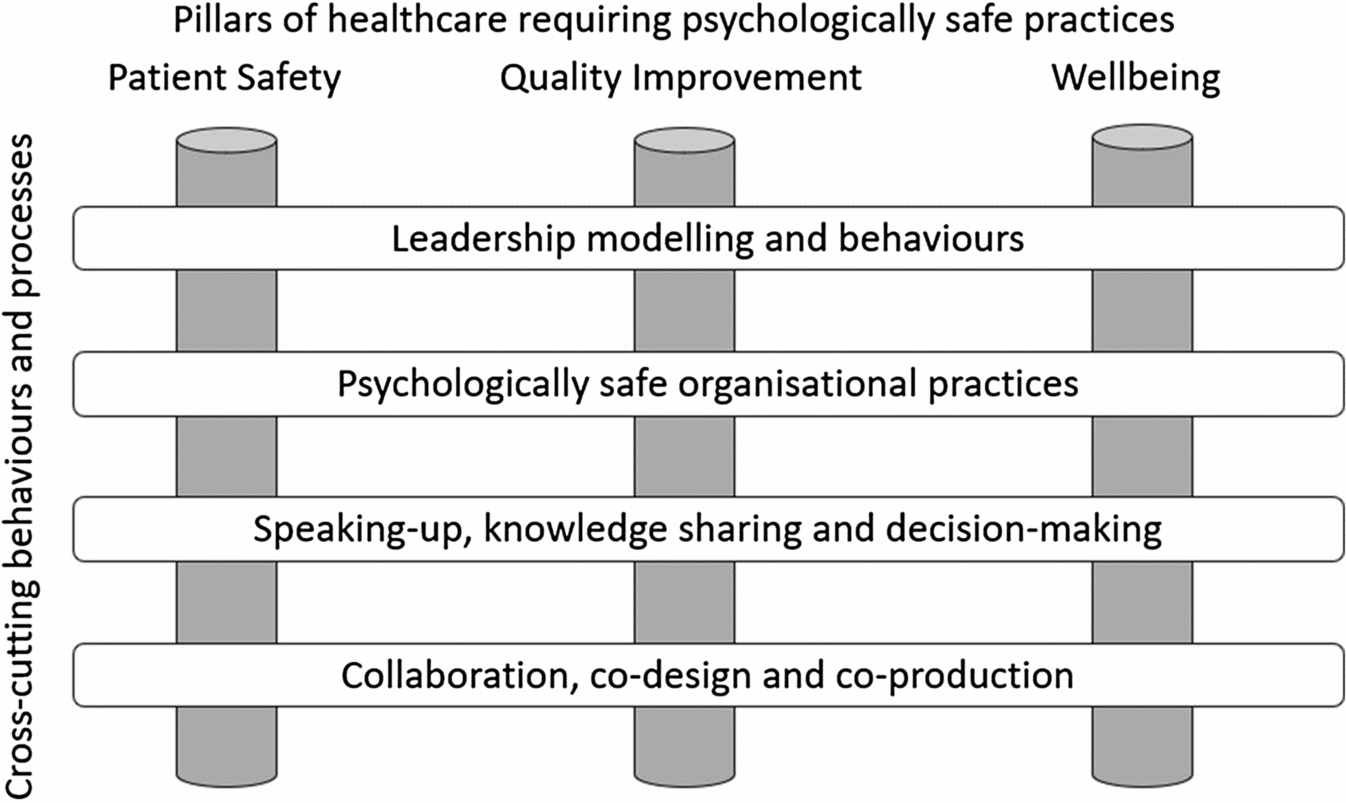| 1. Select and engage a core group of key influencers in the organisation to lay out a strategic plan with the core columns of psychologically safe practice. Pillars for ultimate outcomes and cross-cutting themes for the requirements to achieve these outcomes. A visual representation of this is below: | |

| |
| 2. Support and commitment to psychologically safe practice from the organisation to their workforce. This approach includes communicating this commitment to the workforce and the wider community, solidifying the organisational commitment to psychological safety to the proposed strategic plan | |
|
3. Leadership messaging to model psychological safety and focus on the following topics: (a) Discussing the importance of reporting failures and benefits from focusing on quality improvement. Providing empirical substantiation to create an impetus for change (b) Discuss the collective responsibility of staff to speak up when delivering safe patient care and areas that can be improved, including plans to make the process of reporting fair and straightforward. This can also include actively congratulating and even rewarding these actions, where appropriate (c) Discuss personal experiences of occupational failure and what learned lessons from these experiences. This will serve to make failure an acceptable and model that it is acceptable and is part of occupational development (d) Discuss previous difficulties in speaking up to senior colleagues, lessons learned and the importance of speaking up and shared decision-making within and between teams and professions | |
| 4. Create a code of conduct to set expectations for how people should act with each other and instil the values of psychological safety, including open and candid discussions, balanced with compassion and fairness: respectful listening and collaborative debate, all with the focus on providing safe and optimum patient care | |
|
5. Forums and structured discussions for intra- and inter-professional groups to discuss challenges and opportunities in mental health practice. These could provide opportunities to: (a) Create a series of groups that target particular professions, services or problems related to psychological safety. Each group should include an appropriate sponsor who will commit to championing actions arising from these discussions (b) Discuss the collective responsibility of staff to speak up when delivering safe patient care and areas that can be improved. Crucially, these discussions should directly feedback into the organisation and take an action research approach to create improvements from these discussions (c) Provide opportunities to discuss complex decision-making and inform action research that involves staff in co-designing interventions to enhance behaviours relating to psychologically safe practice | |
| 6. Provide training that focuses on psychologically safe behaviours and practice. These include speaking up and voice behaviours, autonomy, respectful listening, collaborative working, advocacy enquiry and collaborative debate | |
| 7. Create medical, educational interventions that allow teams to practice psychologically safe practice in clinical and non-clinical situations. These can include simulating high-pressured situations such as aggressive and violent patients |

An official website of the United States government
Here's how you know
Official websites use .gov
A
.gov website belongs to an official
government organization in the United States.
Secure .gov websites use HTTPS
A lock (
) or https:// means you've safely
connected to the .gov website. Share sensitive
information only on official, secure websites.